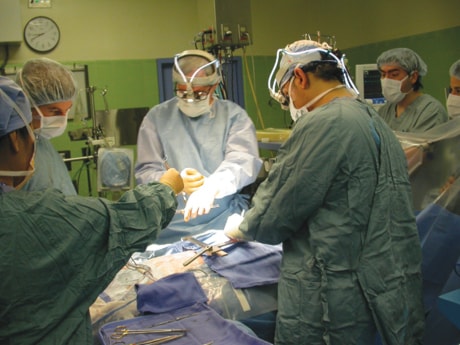MONTREAL — Lauza Legere’s heart is beating strong this Valentine’s Day but not because she’s been poked with Cupid’s arrow.
She’s helping test the C-Pulse Heart Assist System, a new device that rhythmically squeezes her aorta and pumps blood to her damaged heart.
“I feel much better than before,” Legere said in a telephone interview, explaining that before she got the pump it was hard to even take a breath.
“I stopped every two or three words because I was out of breath. I wasn’t able to walk. With the pump, it helps my heart to get the oxygen that I wasn’t able to have.”
Dr. Renzo Cecere of the McGill University Health Centre says Legere is the first person in Canada to get the device, which reduces blood clots that can cause strokes.
He is currently conducting trials on the pump and hopes to implant 12 devices in the next 18 months.
“There are probably thousands of patients who might benefit from a pump like this,” said the doctor, who is director of the Mechanical Heart Assist Program and surgical director of the MUHC’s transplant program.
“This would be an effective therapy as a so-called bridge to transplant. Alternatively, some patients would receive this as what we call destination therapy — this is their last and only option.”
The device is basically a cuff around the aorta, the artery that pumps blood from the heart to the rest of the body. A balloon inside the device inflates and deflates with each heartbeat, pumping the blood through the heart.
There is no need to make incisions into the heart or any major blood vessels during the implantation of the device, which is run by an external battery and mini-computer. Both are worn on the outside of the body.
Patients also don’t need to take anti-clotting medications after surgery.
Legere, who lives in Laval, Que., suffered a heart attack last Aug. 25 and was in bad shape, said Cecere.
“She came to my office in a wheelchair, extremely short of breath, very poor quality of life and no other option,” Cecere said.
The doctor said Legere, who is in her mid-50s, was not a suitable candidate for a transplant at that moment and that other medical treatments weren’t working for her.
Legere had the C-Pulse implanted last Dec. 21.
The pump, which was invented in New Zealand, is based on a concept that’s been around for 30 years, Cecere said. In the past, the technique has been used on heart patients who need additional, temporary support after surgery.
“It’s based on the concept of a balloon which is inserted in the aorta (which) inflates and deflates in synchrony with the heart’s rhythm,” he explained.
“That concept was applied to a device which is implantable and can be operated on the long term versus the original device which was a short-term device.”
The pump can be stopped and disconnected for a short period so the patient can take a shower or go for a brief swim.
“They may not have that assist, that extra boost that the pump provides but it shouldn’t be tragic for them,” Cecere said.
“This is why it can be extremely well tolerated for the patient to disconnect the pump and carry out some activities.”
Legere, whose next step may be a heart transplant when she’s healthy enough and a donor heart is available, said she’s hooked up to the machine 23 out of 24 hours.
“If I’m disconnected too long, I start breathing like before.”
